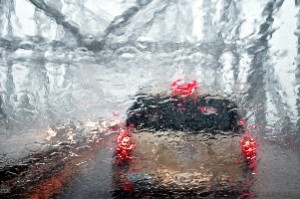 An EU-funded project is developing a sensor system for smaller cars to detect distances between cars on the road, and other safety features. The system, consisting of a camera, lenses, and infared LED, is being built by the Fraunhofer Institute for Reliability and Microintegration (IZM) in Berlin, Germany, with the Italian automaker Fiat and chip manufacturer STMicroelectronics.
An EU-funded project is developing a sensor system for smaller cars to detect distances between cars on the road, and other safety features. The system, consisting of a camera, lenses, and infared LED, is being built by the Fraunhofer Institute for Reliability and Microintegration (IZM) in Berlin, Germany, with the Italian automaker Fiat and chip manufacturer STMicroelectronics.
Driver-assistance systems that detect vehicles in a driver’s blind spot or other cars in front or back getting too close have been installed on high-end vehicles, because of their sophistication and expense. The ADOSE (Application Specific Detection of Road Users with Vehicle On-board Sensors) project, funded by the European Commission, is developing a simpler, less expensive system for small and medium-sized vehicles.
The entire system consists of an infrared LED, camera, and two sensors equipped with Fresnel lenses to detect light signals. The infrared LED distinguishes between darkness and fog by emitting light waves that are scattered back in fog but not in conditions of darkness.
To connect the components, the IZM team designed light-pipes to replace expensive and inflexible optical fibers. Light-pipes are hollow, mirrored tubes that can deflect a light signal by as much as 90 degrees. Light-pipes make the optical signal transmission more efficient and less expensive. They also help keep the system small in size.
The IZM team has already developed a prototype of the sensor system. Centro Ricerche Fiat, the company’s research division, is field testing the system.
Read more: Computer-Vision System Unveiled for Auto Collision Avoidance
Photo: Bob Jagendorf/Flickr
* * *

 RSS - Posts
RSS - Posts
You must be logged in to post a comment.